Report Cards
Welcome to the St. Vrain Valley School District’s elementary report card website. Our elementary schools have been using a standards-based report card since 2003. The standards-based report card is designed to inform parents about their student’s progress towards mastering the Colorado Academic Standards.
In school year 2020-2021, we adopted newly worded report cards aligned to the Colorado Academic Standards in Language Arts, Math, Science, and Social Studies.
History
In 2003, the St. Vrain Valley School District implemented a new Standards-Based Report Card. A standards-based report card lists the most important skills students should learn in each subject at a particular grade level. Specifically, the purposes of a Standards-Based Report Card are:
- To provide more detailed feedback to parents regarding the progress their children are making toward specific learning expectations at their grade level.
- To allow parents and students to understand more clearly what is expected of students and how to help them be successful in a rigorous academic program.
- To provide traditional grades along with scores for each learning expectation addressed in a grading period.
Standards-based report cards provide more consistency because all students are evaluated on the same grade-appropriate skills. Parents can see exactly which skills and knowledge their children have learned.
Overview
In 2018, the Colorado State Board of Education adopted new content standards, creating Colorado’s first fully aligned preschool through high school academic expectations. Developed by a broad spectrum of Coloradans representing Pre-K and K-12 education, higher education, and business, utilizing the best national and international exemplars, the intention of these standards is to prepare Colorado students for achievement at each grade level, and ultimately, for successful performance in postsecondary institutions and/or the workforce.
The revised standards articulate the concepts and skills students are to master at each grade level, pre-kindergarten through twelfth grade. In the new standards grade level expectations and evidence outcomes define mastery expected at a specific grade level.
By the 2020-2021 school year, each school district was required by statute (CRS 22-7-1013) to review its standards in comparison with the Colorado Academic Standards (CAS). Following the review, local education agencies revised its standards as necessary to ensure the standards met or exceed the CAS. To accomplish this, we chose to adopt the CAS verbatim.
In order to reflect the changes in the new Colorado Academic Standards and report to parents their student’s progress, starting with the first trimester in 2014, our elementary standards-based report cards reflected those changes in the new content and how student progress is reported.
Resources For Parents
Report Card Guide
These guidelines are intended to assist parents in understanding the District’s elementary standards-based report card. English Spanish
Report Card Brochures by Trimester
Grade specific brochures (Kindergarten – 5) have been created to provide parents with an overview and explanation of what is being taught each trimester of the school year.
Kindergarten, 1st trimester English Spanish
First Grade, 1st trimester English Spanish
Second Grade, 1st trimester English Spanish
Third Grade, 1st trimester English Spanish
Fourth Grade, 1st trimester English Spanish
Fifth Grade, 1st trimester English Spanish
Kindergarten, 2nd trimester English Spanish
First Grade, 2nd trimester English Spanish
Second Grade, 2nd trimester English Spanish
Third Grade, 2nd trimester English Spanish
Fourth Grade, 2nd trimester English Spanish
Fifth Grade, 2nd trimester English Spanish
Kindergarten, 3rd trimester English Spanish
First Grade, 3rd trimester English Spanish
Second Grade, 3rd trimester English Spanish
Third Grade, 3rd trimester English Spanish
Fourth Grade, 3rd trimester English Spanish
Fifth Grade, 3rd trimester English Spanish
Report Card Samples
Kindergarten English Spanish
First Grade English Spanish
Second Grade English Spanish
Third Grade English Spanish
Fourth Grade English Spanish
Fifth Grade English Spanish
Grading Windows
View Elementary Report Cards Online
Parents and guardians of SVVSD students can access elementary report cards through the Infinite Campus Portal.
- Click here to access the Infinite Campus Portal
- Steps to Create Infinite Campus Account English Spanish
Resources for Teachers
Data Collection Spreadsheets
Kindergarten
First Grade
Second Grade
Third Grade
Fourth Grade
Fifth Grade
FAQs
What are standards?
Colorado has adopted its own list of the skills that students should learn at each grade level from pre-kindergarten through high school. These standards set clear, high expectations for student achievement. Standards tell what students need to do in order to progress through school on grade level. Here are some examples:
- Fifth graders are expected to formulate, represent, and use algorithms to add and subtract fractions with flexibility, accuracy, and efficiency.
- Third graders should be able to implement the writing process successfully to plan, revise, and edit written work.
- Kindergarteners are expected to observe, explain, and predict natural phenomena governed by Newton’s laws of motion, acknowledging the limitations of their application to very small or very fast objects.
Are districts required to adopt the state standards?
According to Colorado Revised Statute S 22-7-1013(b) “in revising its preschool through elementary and secondary education standards, each local education provider shall ensure that it adopts standards, at a minimum, in those subject matter areas that are included in the state preschool through elementary and secondary education standards, including but not limited to English language competency and visual arts and performing arts education.”
Thus each district is required to adopt standards that meet or exceed the state standards and develop a plan for revising curriculum and programs of instruction to ensure that each student will have the educational experiences needed to achieve the adopted academic standards.
How are standards-based report cards different from traditional report cards?
On many traditional report cards, students receive one grade for reading, one for math, one for science and so on. While this still happens on our standards-based report card, each of these subject areas is divided into a list of skills and knowledge that students are responsible for mastering. Students receive a separate mark for each learner expectation.
How can I help my student with the standards-based report card?
Standards-based report cards give you more detailed information about how your student is doing in each subject. You can use this information to help your child by taking advantage of the extra information. Choose a skill you’re concerned about and ask the teacher how you can help your student with it at home. You can also ask the teacher what she/he can do to help your child at school.
What is the difference between this standards-based report card and earlier versions?
The basic format and the goal of the elementary report card have not changed. There are two basic changes with his report card. First, because of the adoption of the new Colorado Academic Standards content contained in the reported is different. Second, reporting is every trimester. A common complaint with older versions was that the new grades were based on year-end expectations and 3s and 4s were generally not achieved until the final marking period. Now, students will be graded using the full range of 1-4 EACH TRIMESTER based on performance indicators taught each trimester.
What is the purpose of the comment sections of the report card?
The grades given should not be the only form of communication between school and home. Other communication methods include conferences, newsletters, and portfolios. The comment section provides an avenue to expand the communication between teacher and parent.
What kinds of evidence should a teacher collect to support the grade they give to my child?
Teachers should use a combination of your student’s assignments, assessments, and communication with your child and observations to determine their performance reporting and grades. The evidence should provide a rationale for the rating given.
Why don’t we see standards-based report cards in middle or high school?
Although we have rigorous standards for middle and high schools, there are many challenges to using a standards-based report card at these levels. One of the biggest concerns is that students need traditional grade-point averages and transcripts to be competitive in applying to college and to determine athletic eligibility. In addition, the large number of subjects students study in high school would make standards-based report cards unwieldy.
Grading for Students with an IEP
1. Letter Grades: If a student is not going to be graded in the same manner, with the same expectations as general education students, then it must be noted in the IEP what the differentiation and grading would be. Based upon that documentation, that is how the student will be graded. If it is not noted in the IEP, then the student is graded in the same manner as the general education students.
2. Standards: Grading according to the IEP is separate from Standards attainment. The Standards attainment should always reflect what the student actually attained. In other words, a student could be meeting just one of the math Learner Expectations (with a score of 1 or 2) and still have an A for a grade. The IEP for that student must reflect the grading parameters and reflect the standards that the student will be working toward and graded on.
3. All of this is agreed upon in the IEP staffing. The regular and special education teacher should collaborate on the entire process.
4. Differentiation or exceptions to the grading scale may be identified as long as the notation of differentiations or exceptions does not identify the student as having a disability or being in special education. These differentiations or exceptions must be available to any student, not just those students with disabilities (including students performing above grade level). Example: An asterisk after the grade may denote that the student received differentiation grades or completed work at a lower grade level. However, the explanation of the asterisk on the report card may not indicate the student’s participation in special education. In Infinite Campus, in the overall comment section, you may use Canned Comment #18; Modified Curriculum.
Who should I contact if I have questions regarding my child’s report card?
The first contact should be your child’s teacher. If questions still persist please contact your building principal. Questions regarding the purpose and design of the report card should be directed to Kahle Charles, Assistant Superintendent of Assessment, Curriculum, and Instruction, at [email protected] or 303-702-7591.
Components of a Standards-Based System
The SVVSD Teaching and Learning Cycle was created to identify and describe those practices that have been found to be essential in providing a comprehensive standards-based education.
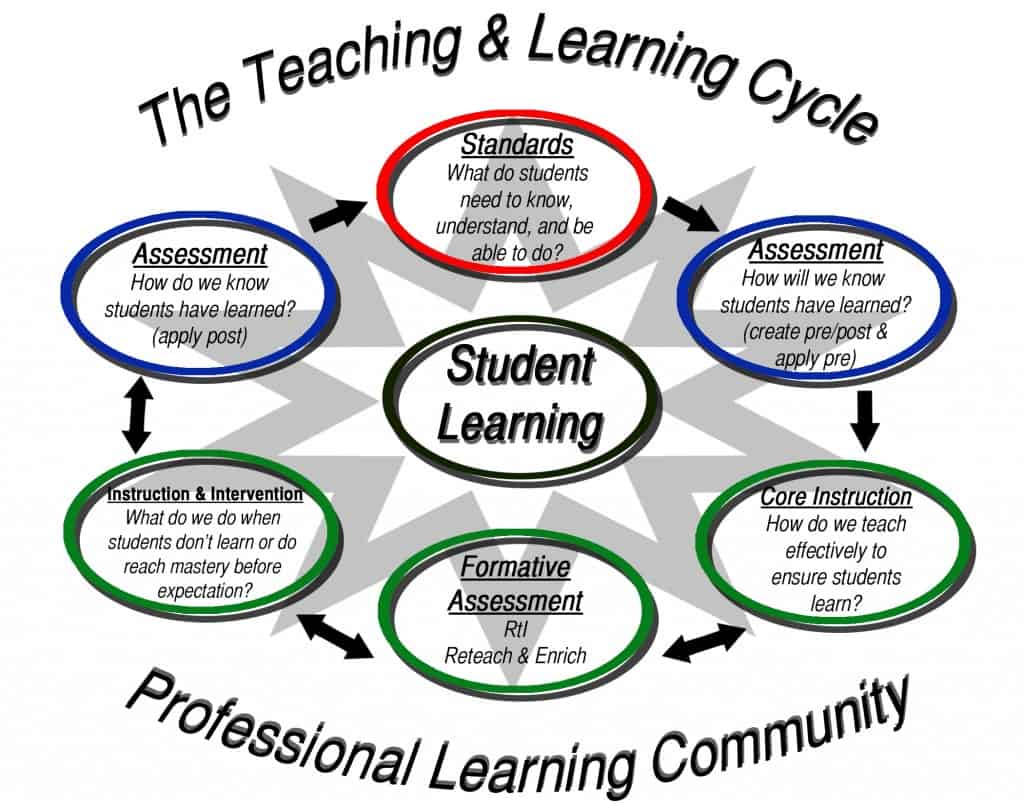
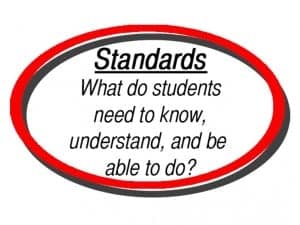
We need to identify specifically and clearly the standards, grade level expectations, and evidence outcomes that all students should learn. The academic standards, (as outlined by the Colorado Department of Education) describe what a student should know and be able to do at a given grade-level. The standards-based curriculum as depicted in the unit plans identifies what a teacher uses to ensure that curriculum targets the Colorado Academic Standards.
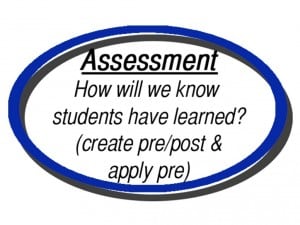
In order to ensure students learn the grade level expectations, evidence outcomes, Colorado Essential Skills, and skills identified in district curricula, we must regularly monitor student learning through a variety of assessment strategies.
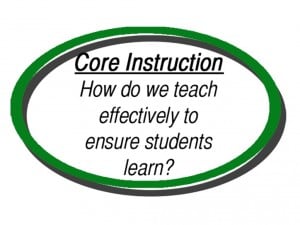
Effective instruction is what causes students to learn. In standards-based district and schools, research-based instructional methods and strategies are used to deliver standards-aligned curricula and ensure students have adequate and equitable opportunities to learn.
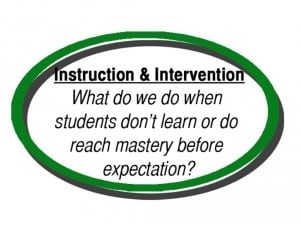
In standards-based districts and schools, students are provided multiple opportunities to learn, both in the classroom and beyond the classroom, through interventions, supplemental programs, or other support systems. Such supplemental learning opportunities are provided both to students who are not reaching mastery and/or who are performing above mastery.
Our report card is the reporting tool that allows a teacher to communicate accurately a student’s progress towards meeting standards at critical junctures throughout the school year.
Definitions of Proficiency Levels
Each trimester a rating is given for student performance in relationship to the grade level expectations. Performance is rated on a scale of 1 to 4. Not all learner expectations are addressed each grading period as indicated by an N/A.
Advanced/Exceeds Expectations (4)
Demonstrates Advanced Achievement of Grade Level Benchmark
Exceeds End of Trimester Grade Level Expectation
The student is exceeding the grade level expectation; skills and concepts are accomplished independently and consistently; creates products that are exceptional and demonstrate in-depth thinking.
Mastery/Meets Grade Level Expectations (3)
Demonstrates Mastery of Grade Level Expectation
Meets End of Trimester Grade Level Expectation
The student is achieving grade level expectations; skills and concepts are consistently accomplished with minimal or no assistance; creates products that are of high quality.
Partial Proficiency/Working Towards Expectations (2)
Demonstrates Partial Proficiency of Grade Level Expectations
Partially Meets End of Trimester Expectation
The student is performing near grade level expectation; skills and concepts are emerging with practice and teacher assistance; creates products that need refinement. Progress is being made towards the attainment of expectations.
Needs growth/Below Grade Level (1)
Demonstrates Beginning Stages of Grade Level Expectations
Does Not Meet End of Trimester Expectation
The student is demonstrating minimal progress toward grade level expectations; skills and concepts need repeated practice and frequent guidance from the teacher; inconsistent quality of related products.
Analysis Process
Before making a determination regarding student proficiency and marking it on the report card, you should analyze a student’s progress over the course of the trimester. It is important to note that you have been reviewing the results of assessments and student work throughout the reporting period to determine the next steps for instruction.
This analysis for student proficiency is based on key pieces of evidence. This process requires that you:
• Collect key samples of student work in a body of evidence.
• Analyze this entire body of evidence in comparison to end of trimester grade level expectations.
A Body of Evidence
The following list indicates the types of evidence a teacher could collect in preparation for using the standards-based report card. While it is not required that a teacher collect every piece of evidence listed below for every student, these pieces of evidence will create a well-rounded picture of student progress towards meeting end of the trimester learner expectations.
- End of unit assessments
- ReadyGEN Performance-Based Assessments
- Running Records
- Reading assessments (PALS, Dibbles, iReady)
- Anecdotal records
- Teacher Observation
- Independent reading/writing conferring notes
- Small group instruction
- Writing samples
- enVisionmath2.0 assessments
- FOSS Kit End-Of-Module assessments
- IMPACT Social Studies/Colorado Story assessments
Process for Analyzing a Body of Evidence
In order to determine report card marks, you should analyze a student’s body of evidence using the following process.
Step 1: Analyze the body of evidence for completeness
- Assure that there is sufficient evidence for each of the learner expectations.
- Gather additional evidence as needed.
Key questions to consider:
- What’s in the body of evidence?
- Is the body of evidence complete?
- How does the body of evidence align with end of the trimester grade level expectations?
- If not, how will you collect what you need?
Step 2: Analyze the Body of Evidence for Quality
- Analyze the quality of student work across the trimester.
- At the end of the trimester, organize and synthesize these assessments to determine the proficiency level for each of the learner expectations. The new Infinite Campus grade book will be a great tool for this process.
Key questions to consider:
- What is the quality of this body of evidence?
- What parts of the body of evidence are Beginning? Partially Proficient? Mastery? Advanced?
- How do you know?

